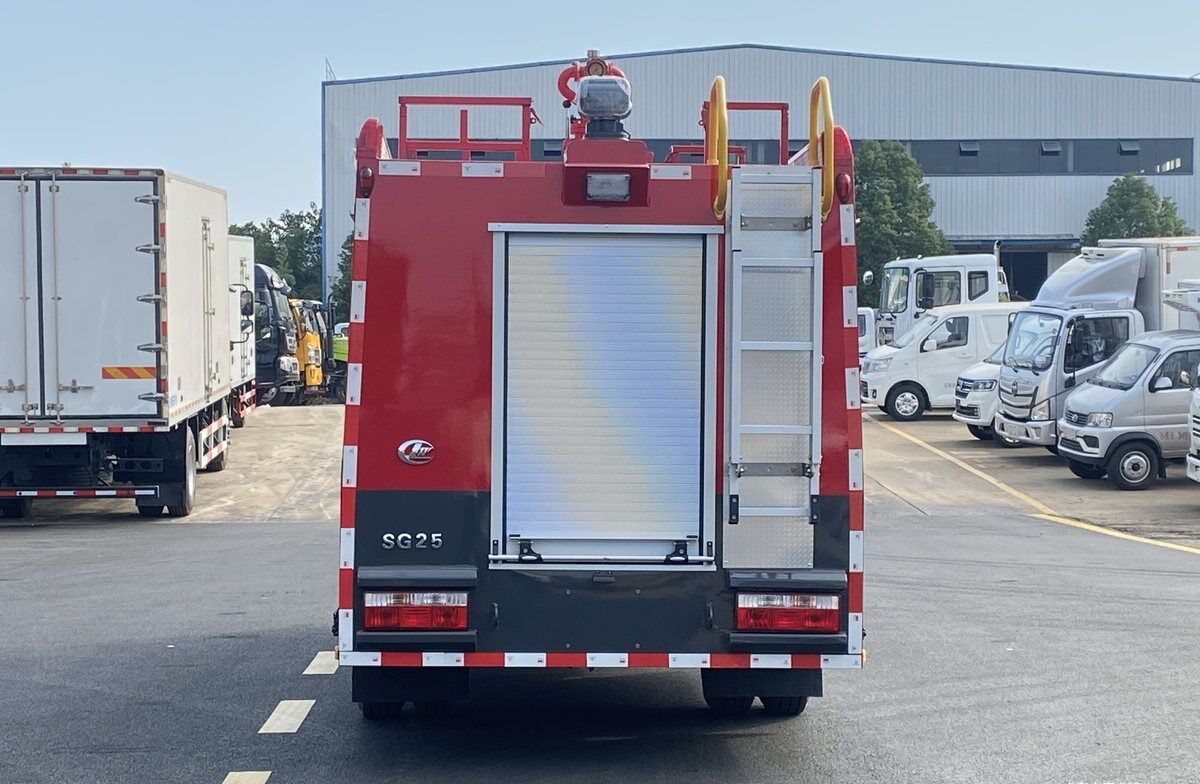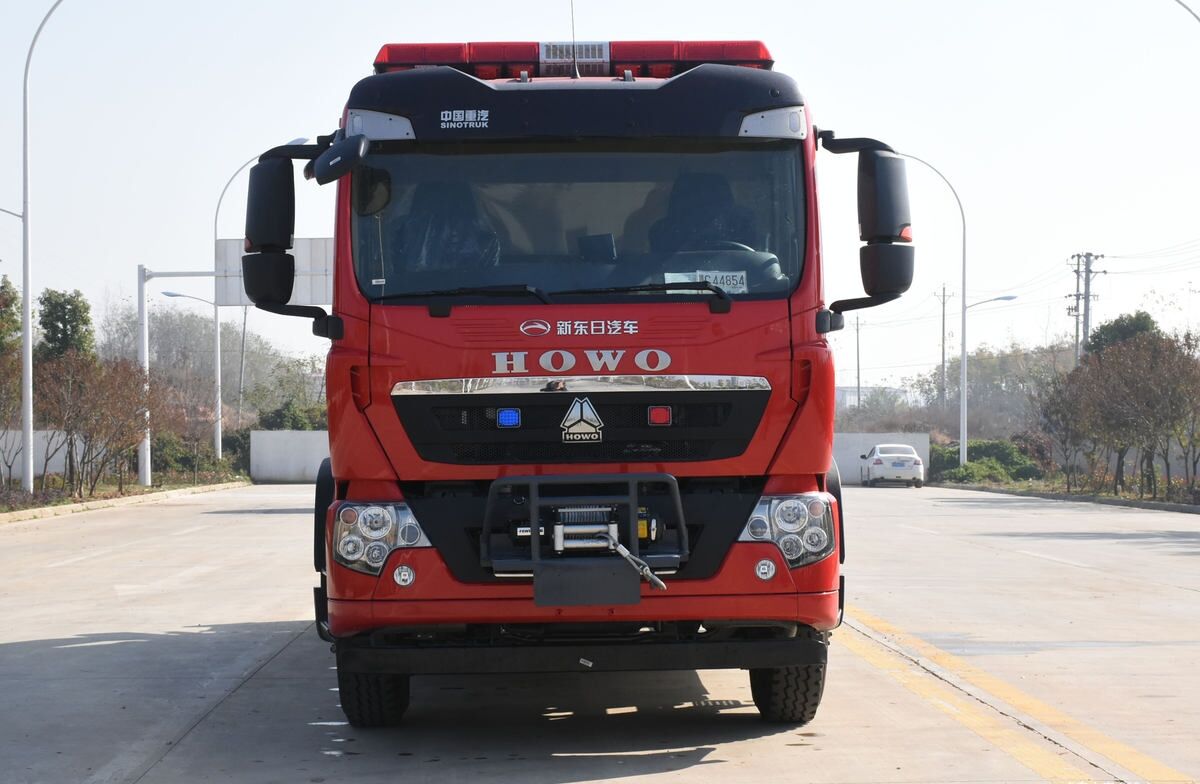The Evolution of Fire Fighting Apparatus in the Digital Age
Fire fighting equipment has come a long way from the basic horse-drawn water pumps of the past. Modern fire trucks represent the pinnacle of emergency response technology, combining advanced safety features, sophisticated communication systems, and enhanced operational capabilities. As fire departments worldwide upgrade their fleets, understanding the crucial features that define contemporary firefighting vehicles becomes increasingly important for both department leaders and firefighting professionals.
Advanced Safety Systems and Protection Features
Enhanced Crew Protection Technologies
Modern fire trucks incorporate comprehensive safety systems designed to protect firefighters during emergency responses. Advanced rollover protection, reinforced cab structures, and impact-absorbing zones have become standard features. These trucks also include multiple airbag systems, not just for frontal impacts but also for side and rollover protection. The integration of electronic stability control helps prevent accidents during high-speed responses and challenging weather conditions.
State-of-the-Art Visibility Systems
Visibility enhancements in modern fire trucks include LED emergency lighting systems that provide superior illumination while consuming less power. 360-degree camera systems offer drivers complete situational awareness, eliminating blind spots during both emergency responses and routine operations. Thermal imaging cameras integrated into the vehicle help identify hot spots and potential hazards before firefighters enter dangerous situations.
Digital Command and Communication Infrastructure
Integrated Communication Centers
The command center in modern fire trucks functions as a mobile headquarters, equipped with advanced communication systems. These include multi-band radio systems, satellite connectivity, and real-time data transmission capabilities. Touch-screen displays provide instant access to building plans, hydrant locations, and hazardous material information, enabling better decision-making during critical situations.
Smart Vehicle Management Systems
Modern fire trucks feature sophisticated onboard computers that monitor every aspect of the vehicle's performance. These systems track fuel efficiency, maintenance schedules, and vehicle diagnostics in real-time. The integration of GPS technology and automatic vehicle location systems helps optimize response routes and coordinate with other emergency responders effectively.

Enhanced Pumping and Water Management Features
Advanced Water Delivery Systems
Contemporary pumping systems in modern fire trucks offer unprecedented water flow management capabilities. Electronic pressure governors maintain consistent water pressure while automated foam proportioning systems ensure precise mixture ratios for different types of fires. These advanced systems can be controlled through intuitive touchscreen interfaces, allowing firefighters to focus on tactical operations rather than equipment management.
Water Conservation Technologies
Modern fire trucks incorporate smart water management features that maximize efficiency while minimizing water waste. High-pressure, low-volume nozzles deliver more effective fire suppression with less water consumption. Some trucks even include water recycling systems for training exercises and non-emergency operations, demonstrating a commitment to environmental responsibility.
Ergonomic Design and Equipment Storage
Optimized Storage Solutions
The layout of modern fire trucks prioritizes quick access to essential equipment while maximizing available space. Pull-out compartments, adjustable shelving systems, and specialized tool mounting solutions ensure that every piece of equipment has its designated place. LED compartment lighting and automatic locking systems enhance accessibility and security during both day and night operations.
Crew Comfort Features
Understanding that firefighters spend considerable time in their vehicles, modern fire trucks incorporate ergonomic features that enhance comfort and reduce fatigue. Climate-controlled cabins, adjustable seating with enhanced suspension systems, and noise reduction technology create a better working environment for the crew. These comfort features contribute to improved focus and performance during extended operations.
Environmental and Efficiency Considerations
Eco-Friendly Power Systems
Modern fire trucks increasingly incorporate hybrid power systems and clean diesel technologies to reduce environmental impact. These advanced powertrains not only lower emissions but also provide better fuel economy without compromising performance. Some departments are even exploring electric and hydrogen fuel cell options for their auxiliary power units.
Smart Resource Management
Energy-efficient LED lighting, solar panels for auxiliary power, and automatic engine shut-off systems help conserve resources while maintaining operational readiness. Advanced power management systems ensure that critical equipment remains powered while minimizing unnecessary fuel consumption during extended operations.
Frequently Asked Questions
What makes modern fire trucks more efficient than older models?
Modern fire trucks combine advanced digital systems, improved safety features, and enhanced operational capabilities. They offer better fuel efficiency, more effective water management systems, and integrated communication technologies that significantly improve response effectiveness and crew safety.
How do digital features enhance firefighting capabilities?
Digital features in modern fire trucks include advanced GPS navigation, real-time data transmission, thermal imaging cameras, and sophisticated command centers. These technologies provide better situational awareness, improved communication, and more efficient resource management during emergency responses.
Are modern fire trucks more environmentally friendly?
Yes, modern fire trucks incorporate various eco-friendly features including hybrid power systems, clean diesel technologies, LED lighting, and smart resource management systems. These features reduce environmental impact while maintaining or improving operational capabilities.
Table of Contents
- The Evolution of Fire Fighting Apparatus in the Digital Age
- Advanced Safety Systems and Protection Features
- Digital Command and Communication Infrastructure
- Enhanced Pumping and Water Management Features
- Ergonomic Design and Equipment Storage
- Environmental and Efficiency Considerations
- Frequently Asked Questions

